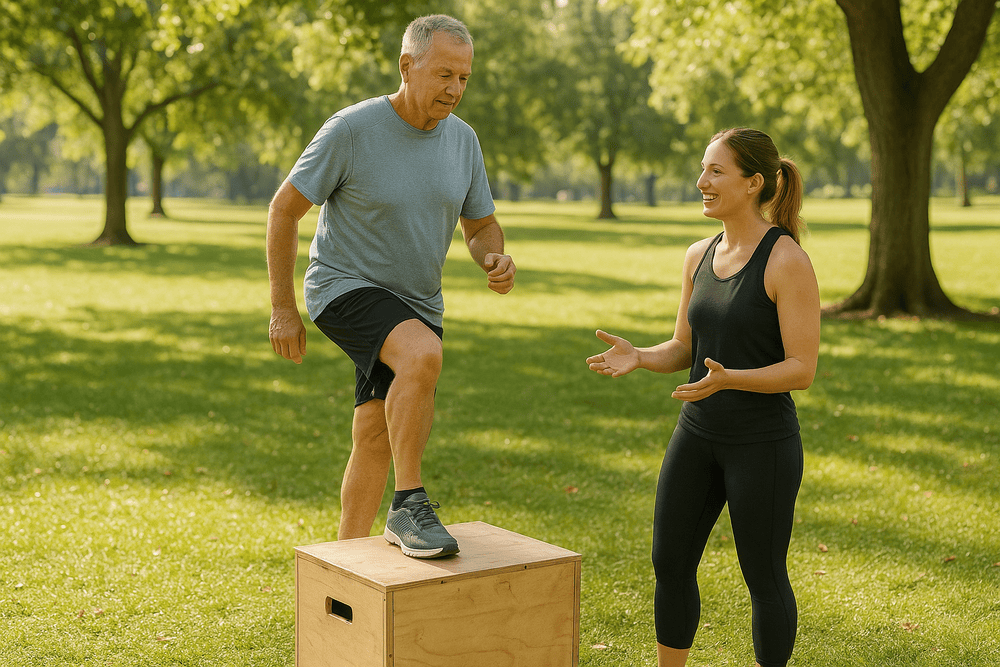Master Functional Training for Better Movement and Injury Prevention
Gabriel Watts
2025-10-12
6 min read

Functional training has taken the fitness world by storm in recent years. But unlike fleeting trends, this method of exercise has rooted itself firmly in practicality and results. Unlike traditional gym routines that target specific muscles, functional training focuses on improving how you move in daily life. Whether you’re carrying groceries, bending to tie your shoes, or climbing stairs, functional training can make these actions smoother, safer, and more efficient. But what exactly is functional training, and how can it help enhance everyday life while protecting your body from injuries? This guide answers those questions and more, helping you understand how this fitness approach can benefit anyone, regardless of age or lifestyle.
What Is Functional Training?
At its core, functional training is about mimicking and enhancing the movements you perform regularly. It combines strength, balance, flexibility, and coordination to ensure your body functions as a cohesive unit. Think of it as training for “real life,” rather than just for the gym. Unlike isolated weightlifting exercises, such as the bicep curl, functional training typically engages multiple muscle groups simultaneously. Exercises such as squats, lunges, or kettlebell swings incorporate movements that recruit core strength, stability, and range of motion. By targeting the body in a holistic manner, this type of exercise fosters better performance in your daily activities and even supports long-term physical health.
Why Functional Training Matters for Everyday Movement
Everyday tasks may seem effortless, but they often require complex bodily movements. For example, picking up your toddler involves squatting, lifting, and balance. Similarly, walking up a hill requires leg strength, coordination, and endurance. Functional training builds strength and efficiency in precisely these types of compound movements. For instance, functional exercises like deadlifts simulate the motion of lifting heavy objects off the ground. By practicing these motions in a controlled setting, you develop strength and muscle memory, which can prevent common lifting injuries in real life. Additionally, functional training is effective in targeting stabilizing muscles often neglected in traditional workouts. These muscles play a critical role in maintaining posture and alignment, ensuring your body performs optimally while minimizing wear and tear.
Preventing Injuries Through Functional Training
One of the standout benefits of functional training lies in its ability to significantly reduce the risk of injuries. Many modern injuries stem from repetitive strain, poor posture, or inadequate muscle balance. Functional training addresses these vulnerabilities head-on. Take, for example, lower back pain, which is a common issue for many. Often, this is caused by weak core muscles or imbalances in the posterior chain (the muscles that run along your back). Functional core exercises such as planks or bird dogs not only strengthen those weak muscles but also improve stability, protecting your back when you bend or twist during daily tasks. Athletes, too, rely heavily on functional training to rehabilitate and prevent injuries. Typical recovery programs often incorporate movements like single-leg deadlifts or lateral lunges to restore balance and strength. These exercises help athletes regain their full range of motion safely and adapt their bodies for future performance.

Functional Training Exercises You Can Start Today
While functional training is best done under expert guidance initially, there are several simple, effective movements you can start incorporating into your routine right now.
1. Squats
Squats are a staple functional movement that mimics actions like sitting down and standing up. To start, practice bodyweight squats, ensuring that your knees don’t extend beyond your toes and that your back stays straight.
2. Planks
Planks are fantastic for building core strength and stability. Begin by holding a forearm plank for 20–30 seconds, gradually increasing your time as your strength improves. This exercise strengthens your abs and stabilizing muscles, which are crucial for posture.
3. Farmer’s Carry
This exercise simulates carrying objects like grocery bags or suitcases. Grab a dumbbell or kettlebell in each hand, keep your body upright, and walk in a straight line. This strengthens your grip, shoulders, and core.
4. Step-Ups
Mimicking the motion of climbing stairs, step-ups help strengthen your quadriceps, hamstrings, and glutes. Use a sturdy bench or step and alternate legs as you step up and down.
5. Lunges
Lunges reinforce stability and improve balance. Practice forward lunges, focusing on activating your glute muscles as you step back to your starting position.
The Long-Term Benefits of Functional Training
Functional training doesn’t just help with short-term performance or injury prevention; its rewards extend far into the future. For older adults, it offers a way to maintain mobility and independence by preserving strength, balance, and bone density. For younger individuals, it builds a strong foundation that prevents future health issues caused by misalignments, weak muscles, or sedentary lifestyles. Furthermore, this holistic approach to fitness enhances athletic performance, making it a favorite among professionals in sports ranging from tennis to basketball. By prioritizing functional movements, athletes achieve better coordination and agility for game-day success.
Integrating Functional Training Into Your Routine
If you’re new to functional training, consider consulting a fitness coach or trainer to create a customized program tailored to your needs and goals. Even if you’re a seasoned gym-goer, adding functional elements to your routine can yield significant benefits. Start small and focus on form over weight or intensity. Functional training is about quality movements that mimic real-life actions, so take the time to perform each exercise correctly. Over time, you’ll notice not only an improvement in your fitness levels but also in your confidence and ease in tackling daily tasks. Functional training is the gateway to long-lasting physical wellness. By incorporating exercises that mirror everyday activities, you strengthen your body where it matters most, reduce your risk of injuries, and improve overall efficiency. Take the first step today. Start with the basics like squats or planks, and gradually expand your routine as you become more confident. If you want expert guidance, reach out to a professional trainer who can tailor a program to your specific needs.



